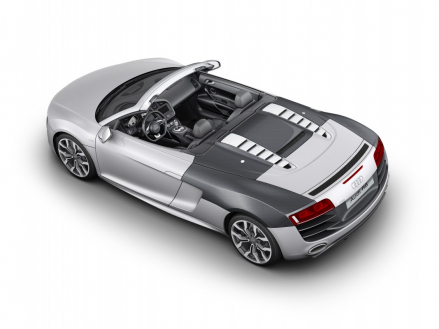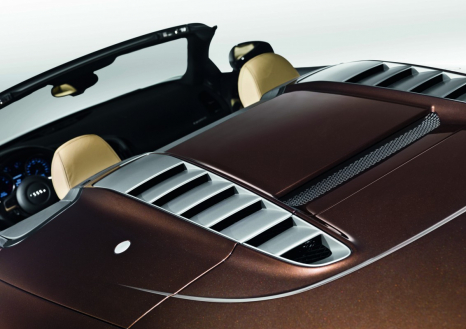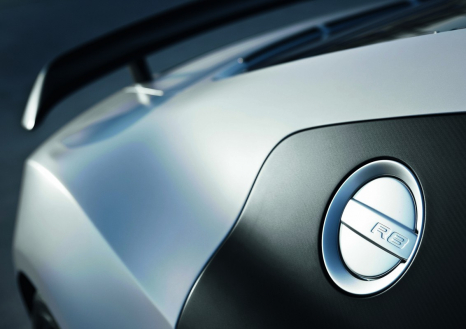CFRP materials
Carbon-fiber-reinforced polymers (CFRP) are particularly attractive materials for the “ultra” lightweight design from Audi. The brand already offers a number of large and small CFRP components, primarily in the R8 model family. These range all the way to partially self-supporting structural components such as the side walls and the cover for the top component in the R8 Spyder.
In future models, Audi plans to use CFRP components manufactured using the more efficient RTM (resin transfer molding) process in the vehicle structure. With RTM, the dry fiber fabric is first draped (formed) before being placed in a closed, heated die and injected with a synthetic resin after the press is closed. The fabric is thoroughly saturated and cured under pressure and temperature. The experts at Audi have developed specialized expertise in the virtual simulation of these operations, enabling them to optimize the production process in advance.
In the Multimaterial Space Frame of the future, the new CFRP components will reinforce steel and aluminum components or will serve as independent components in the structure. Not only is carbon-fiber-reinforced polymer around 60 percent lighter than steel; it is a designer material that allows the mechanical designers to freely define many component properties.
CFRP components perform best when they are designed to absorb forces coming from a single direction. The individual layers of fiber fabric placed over one another in the synthetic resin matrix can be aligned identically to achieve maximum strength. For test purposes, Audi built one R8 with a complete roof arch, including the pillars, made of a largely unidirectional CFRP material. So far the construction has survived every rollover test with absolutely no deformation.
Another possible application for carbon-fiber-reinforced polymers is in the longitudinal members in front of or behind the passenger cell. The members developed by Audi exhibit excellent crash properties. The members in the rear survive a defined-energy frontal collision with no fractures or deformations. Up front, however, the countless individual fibers of the elements fan out in all directions like the petals of a blossom (“crushing”). This deformation and separation from the matrix consumes a very large amount of energy. So-called trigger edges at the front end of the component ensure that the impact is optimally absorbed. The experts at Audi first simulated the crushing sequence on the computer, then in experiments. Audi plays a leading role in the automobile industry thanks to its specialized expertise in this field.
The Audi experts are working concurrently on a new type of CFRP structural elements called OLAS (oscillating laminated absorbing structures), which visually resemble wave-shaped roofing tiles. This design allows them to absorb extremely large amounts of energy over short distances. In the medium term, OLAS could replace the members typically used today in the vehicle structure.
Stand: 2011


